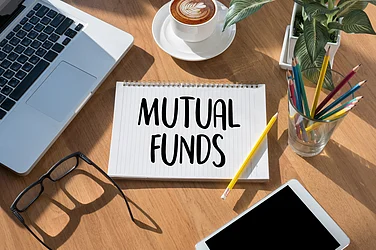Different types of Mutual Fund Schemes to meet the varied needs of all types of investors.
Based on Risk
Every mutual fund scheme document comes with a risk-o-meter that can help you determine the risk level associated with it. The level of risk is determined by various factors – the type of securities in the portfolio, market conditions, government stability, and other macro-economic factors.
- Low Risk: Schemes investing in government securities or money market instruments are generally said to have low risk. Those investing in these scheme can expect reasonable returns and least risk of loss.
- Moderately low risk: Ideal for medium-term investment (1-3 years), these schemes invest in short- to medium-term debt securities issued by AAA-rated corporates and the government.
Advertisement
- Moderate risk: Schemes with a moderate risk profile typically invest in a range of debt securities. A small portion of the portfolio may also be invested in equity. These are idea for those seeking to invest for a period of three years or more.
- Moderately High risk: These schemes come with a portfolio majorly comprising of stocks. While the scheme offers the potential to create wealth over the long term, investors should also note that their investment can face the risk of complete capital loss. Historically, it has been observed that equity schemes tend to do well over longer periods of time (over five years or more).
Advertisement
- High risk: The fund managers of these schemes typically invest in stocks of smaller or lesser known companies that do not have a proven track record, which increases the associated uncertainty with their future performance.
Even though each scheme comes with a risk-o-meter, it is important to consult a financial advisor to determine your own risk appetite depending on your income, expenditure, financial responsibilities and goals.
Alternative Funds
- Index Funds: These schemes mimic the index. What this essentially means is that they buy the same stocks and in the same proportion as in the index they are following. For example, a S&P BSE Sensex Index Fund would comprise the same 30 stocks as in the benchmark index and in the same proportion. Such schemes follow a passive investment strategy – the fund manager simply rebalances the portfolio periodically to ensure that the scheme’s portfolio is mimicking the index. In this way, the scheme offers investors returns that are similar to the benchmark index.
- Exchange Traded Funds: These are index funds that can be bought or sold on exchanges just like any other stock. As it is traded on exchanges, an ETF’s price fluctuates on a real-time basis. Just like any other mutual fund, an ETF has a portfolio of securities (comprising stocks, bonds etc.) and divides the combined ownership of these securities into shares. ETF holders are entitled to interest income or dividends paid by underlying securities and if they decide to sell, then they receive the residual value.
- Fund of Funds: Unlike a regular mutual fund scheme that invests in individual securities, fund of funds invest in other funds and mutual fund schemes.














